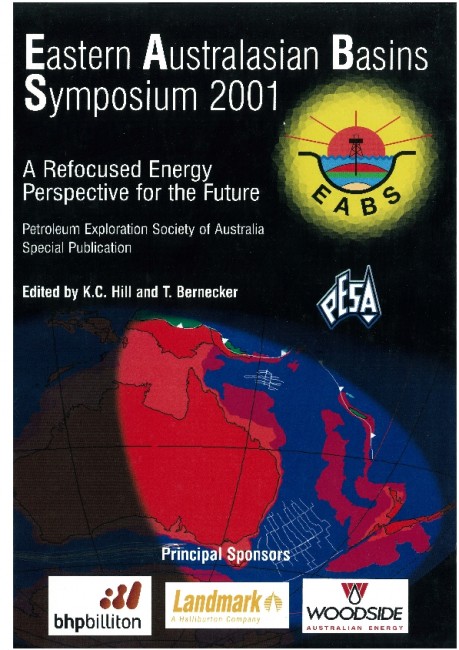Publication Name: Eastern Australian Basins Symposium 2001
Authors: A.N. Aburas and P.J. Boult
Date Published: November 2001
Number of Pages: 30
Reference Type: Magazine Article
Abstract:
A refined structural interpretation of the onshore Otway Basin, based on modelling of lateral transfer faults, using 2D seismic acquired in 2000, has identified potential petroleum traps that may have been overlooked.Gravity images of the central part of the Otway Basin in Victoria show a series of NW- SE trending basement highs separated by apparent NNE-SSW trending fracture zones. Palynology from surface and well data and heat flow studies have revealed differential uplift and erosion of the Eumeralla Formation varying by up to 1,500 m over very short distances across fracture zones.
Isopach maps of the lower Eumeralla Formation show that half graben bounding growth faults, which are associated with deposition of the Crayfish Group during the initial extensional opening of the Otway
Basin, continued to grow up until the end of the Aptian. Coincident with this growth, left-lateral offset of tilted fault blocks resulted from movement of pre-existing basement weaknesses. This was followed by thermal sag during the Albian and cessation of extensional and transfer fault movement, allowing fairly uniform thickness of the upper Eumeralla Formation to be deposited across most of the Otway Basin.
Isopach maps of the upper Eumeralla Formation show major inversion during the Cenomanian expressed by uplift and erosion of tilted fault blocks and NNE-SSW trending anticlines formed by a NW-SE compressional regime. Fault plane displacement mapping of NW-SE striking faults throughout the Otway Basin shows common greater displacement at the base of the Sherbrook Group than at the top of the Crayfish Group. This indicates that these faults were initiated post Albian at shallow depths and propagated downwards.
A new trap style has been recognised where the younger NW-SE striking faults cut across inversion noses associated with older transfer faults.


